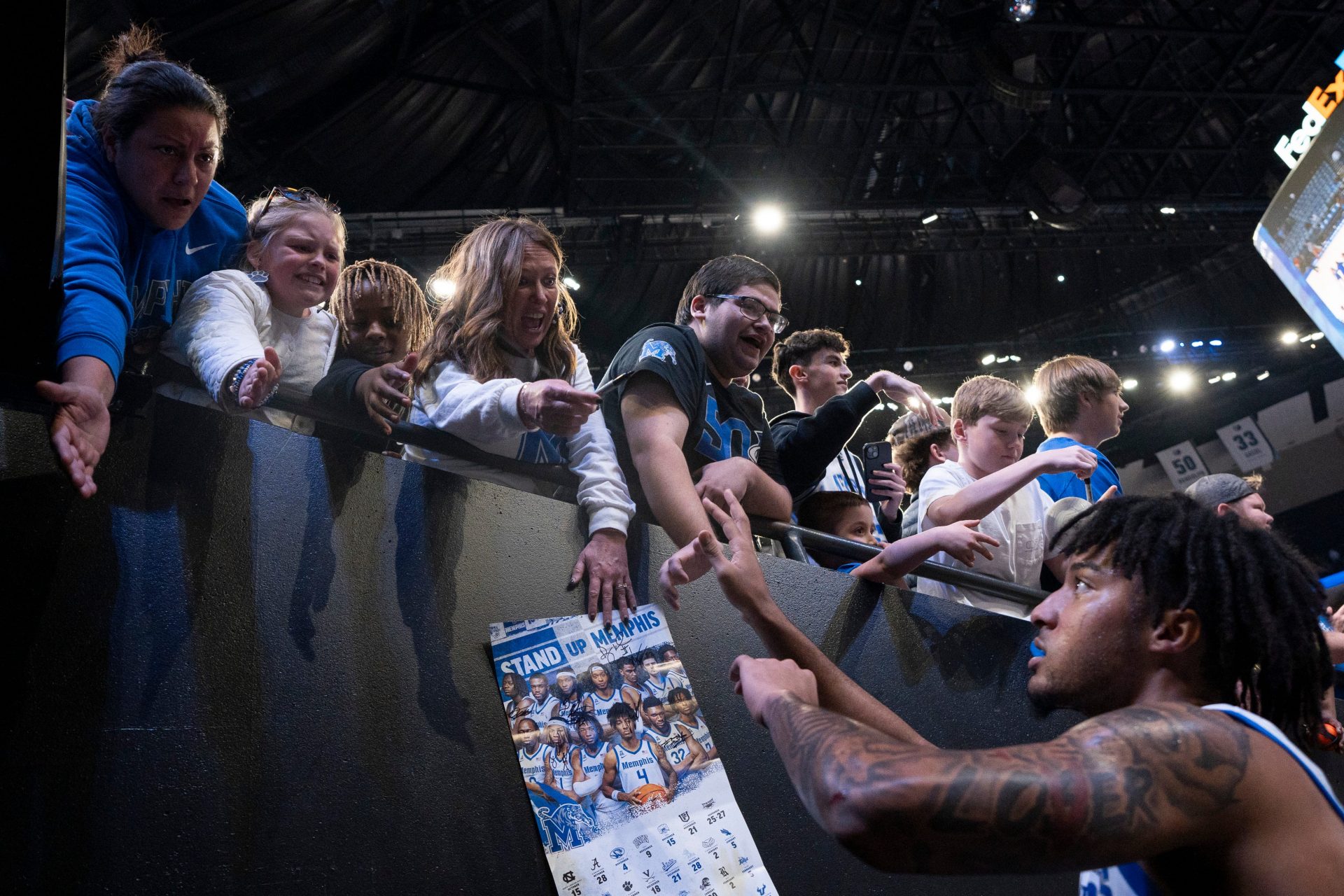The era of amateurism in college sports is rapidly giving way to a new reality, where million-dollar demands are becoming the norm. The latest example comes from Memphis transfer PJ Haggerty, whose camp is reportedly asking for more than $4 million and a guarantee to play the point guard position, according to Jeff Goodman. This bold financial play mirrors similar demands from high-profile athletes who recognize their market value in today’s collegiate landscape.
The demand follows Haggerty’s impressive basketball journey from TCU to Tulsa, where he earned AAC Freshman of the Year honors, and then to Memphis, where he had a standout season. With an existing NIL valuation of $1.7 million on On3, Haggerty’s financial expectations reflect his status as one of the nation’s top offensive threats. Even Power Five programs might struggle to accommodate such significant financial requests, raising questions about the sustainability of these escalating athlete demands.
The Iamaleava Precedent: How NIL Deals Are Reshaping College Athletics
Nico Iamaleava’s situation provides a compelling parallel to Haggerty’s demands. The quarterback initially secured a landmark $8 million NIL agreement with Tennessee spanning three years while still in high school, placing him among the highest-paid college quarterbacks before becoming a full-time starter.
Memphis transfer PJ Haggerty’s camp is asking for $4 million-plus and for him to spend majority of his time at point guard, sources involved in the recruitment told @TheFieldOf68.
— Jeff Goodman (@GoodmanHoops) April 18, 2025
After throwing for 2,616 yards and 19 touchdowns, Iamaleava reportedly sought to increase his annual compensation to approximately $4 million, though a family friend has disputed that narrative.
This pursuit of increased earnings led to his entry into the transfer portal and expected commitment to UCLA. While reports suggest Tennessee’s offensive scheme played a role in his decision, the financial aspect remains significant. Iamaleava’s case highlights how an athlete’s perceived value and compensation demands can rapidly evolve based on performance and market conditions.
Free Agency Comes to College Sports
The combination of the transfer portal and NIL opportunities has effectively created a system resembling free agency within college athletics. Athletes now possess unprecedented agency to seek programs offering favorable combinations of playing opportunities and financial compensation, leading to increased player mobility across schools.
“The current ‘student-athlete’ model is unsustainable,” said Shannon Terry, CEO of On3, who anticipates a future where media rights sharing becomes the norm. That prediction aligns with the proposed settlement in the House v. NCAA antitrust lawsuit, which is expected to allow direct revenue sharing between schools and athletes starting in the 2025–26 academic year.
The growing demands for NIL deals, coupled with impending revenue sharing, place considerable strain on university athletic department budgets. Schools may be forced to make difficult decisions regarding resource allocation, potentially impacting non-revenue sports or necessitating increased fundraising efforts.
From the athlete’s perspective, the new landscape offers significant benefits in terms of financial empowerment.
For context, women’s basketball star Caitlin Clark earned an estimated $3.1 million in NIL deals during her college career. However, managing substantial income at a young age presents challenges, and athletes face increased pressure to perform and meet expectations tied to their high compensation.
Industry experts note that the current NIL environment lacks key professional structures such as standardized contracts and certified representation, which can harm athletes’ negotiating power.
This evolving landscape has also fueled debate about whether college sports are moving toward a de facto “pay-for-play” system, despite the NCAA’s official stance against it. As financial incentives increasingly influence recruitment and transfer decisions, the line between collegiate and professional sports continues to blur.
PJ Haggerty’s $4 million transfer demand represents not just an individual negotiation but a watershed moment in the ongoing professionalization of college athletics. As athletes increasingly leverage their market value and universities navigate this new financial reality, the traditional amateur model appears to be fading into history.
KEEP READING: UNC’s #2 All-Time Scorer, RJ Davis, Confirms Over $ 1 Million NIL Deal Amid Ongoing NCAA Lawsuit
In its place is a system where elite college athletes command earnings rivaling those of professionals.
College Sports Network has you covered with the latest news, analysis, insights, and trending stories in football, men’s basketball, women’s basketball, and baseball!


